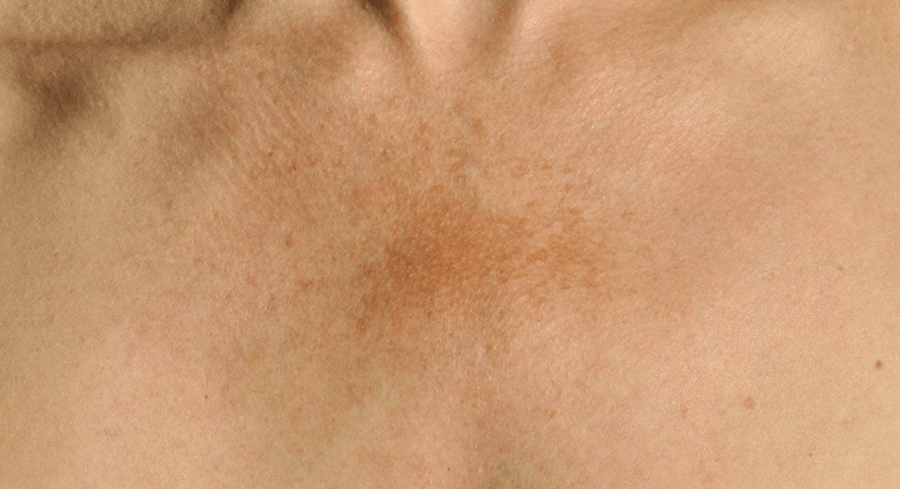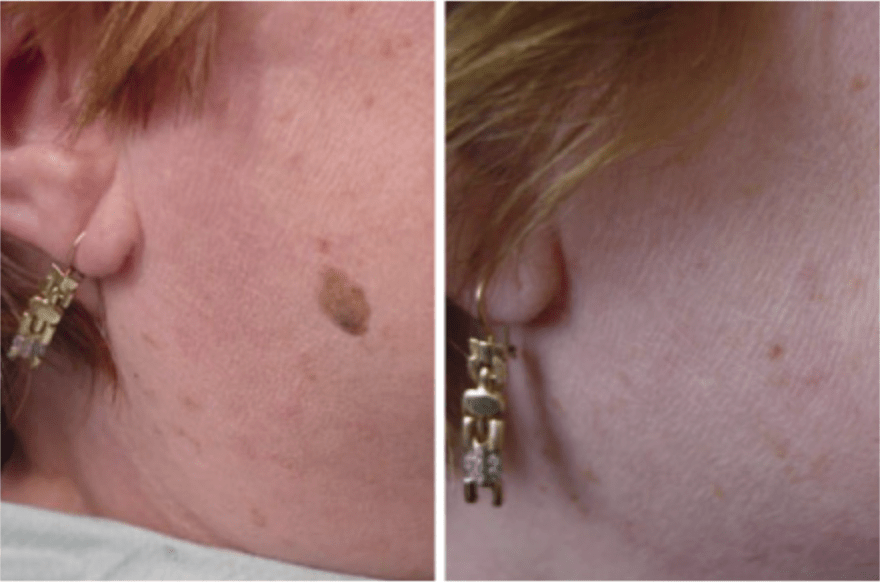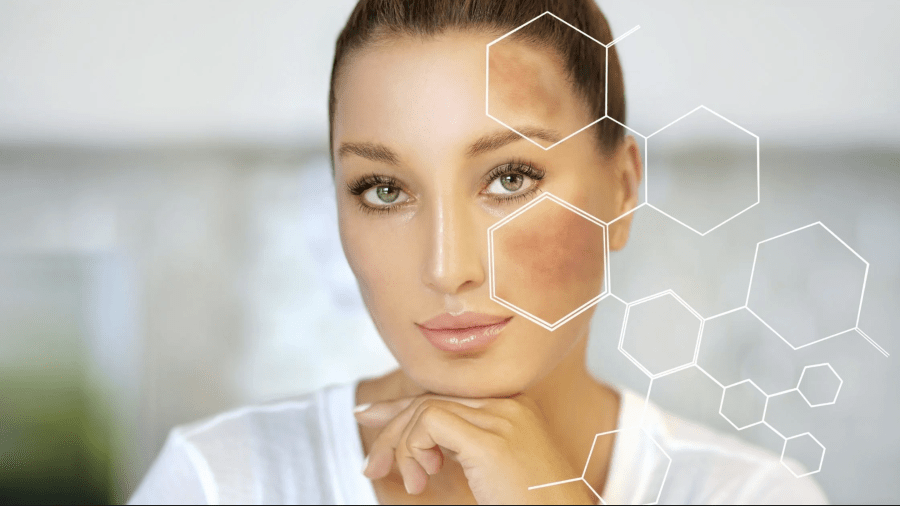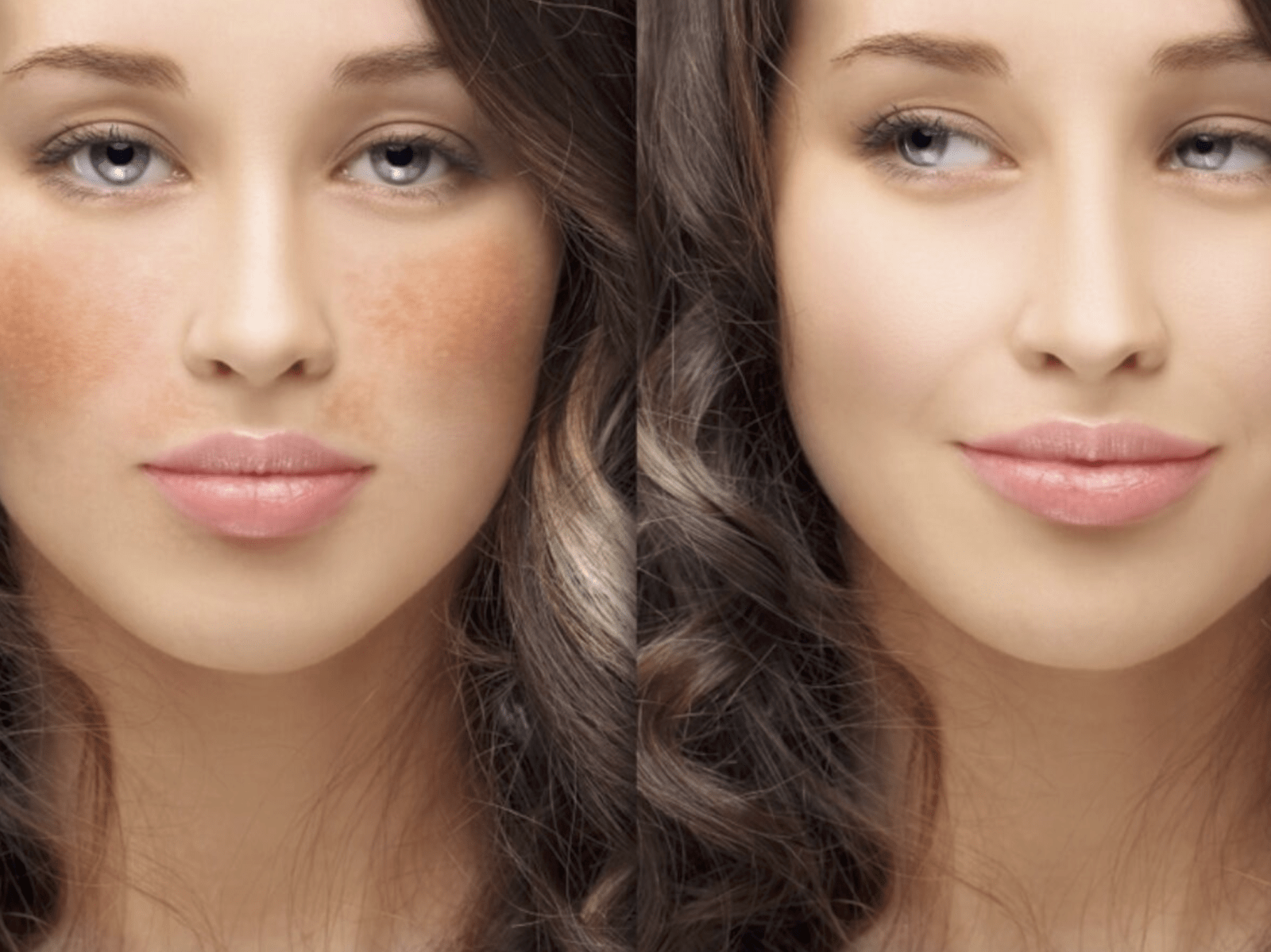Hyperpigmentation and sun damage are common dermatological issues that can significantly impact one’s appearance and confidence. As we delve deeper into these conditions, we must understand their definitions, prevalence, affected demographics, and advanced treatments to choose the best skin care clinic to address them.
Hyperpigmentation refers to patches of skin that become darker than the surrounding areas due to excess melanin production. This condition can result from various factors, including sun exposure, inflammation, hormonal changes, and certain medications.
Sun damage (photoaging) results from prolonged exposure to the sun’s ultraviolet (UV) rays. It can cause skin changes such as wrinkles, fine lines, age spots, and an increased risk of skin cancer. UV rays can penetrate the skin and cause cellular damage, accelerating aging.
Diagnosing hyperpigmentation and sun damage involves a thorough examination by a dermatologist. The process typically includes:
- Visual Examination: A dermatologist will inspect the skin for any discoloration, spots, or changes in texture.
- Medical History: Understanding the patient’s medical history, including sun exposure habits, medication use, and family history of skin conditions.
- Dermatoscopy: A non-invasive diagnostic tool that uses a dermatoscope to magnify and illuminate the skin, helping in the detailed examination of pigmentation patterns.
- Biopsy: In some cases, a small skin sample may be taken for further examination under a microscope to rule out skin cancer or other underlying conditions.

In 2024, hyperpigmentation is estimated to affect approximately 35% of adults globally. Sun damage, particularly in regions with high UV exposure, impacts an even larger portion of the population. According to the World Health Organization (WHO), over 40% of adults in sun-intensive regions report signs of sun damage.
Most Affected Age Groups
While hyperpigmentation and sun damage can affect individuals of all ages, those aged 30 to 50 are most commonly affected. This age group often experiences cumulative sun exposure, hormonal changes, and other factors contributing to these skin conditions.
Types of Skin-Related Problems Caused by Hyperpigmentation and Sun Damage
Hyperpigmentation and sun damage can lead to various skin issues, including:
- Age Spots: Flat, brown spots commonly seen on sun-exposed areas.
- Melasma: Large patches of darkened skin, often due to hormonal changes.
- Freckles: Small brown spots typically more pronounced after sun exposure.
- Solar Elastosis: Yellowish, thickened skin resulting from prolonged sun exposure.
- Wrinkles and Fine Lines: Accelerated aging signs due to UV damage.
- Skin Cancer: Increased risk of malignant growth due to DNA damage caused by UV rays.
Causes and Symptoms
Causes:
- UV Exposure: The primary cause of sun damage and contributes to hyperpigmentation.
- Hormonal Changes: Pregnancy, birth control pills, and hormone replacement therapy can trigger melasma.
- Inflammation: Skin injuries and acne can lead to post-inflammatory hyperpigmentation.
- Medications: Certain medications can increase skin sensitivity to the sun, causing hyperpigmentation.
Symptoms:
- Dark Patches: Uneven skin tone with darker patches on the face, hands, and other sun-exposed areas.
- Rough Texture: Sun-damaged skin often feels rough and dry.
- Wrinkles and Lines: Increased appearance of fine lines and wrinkles.
- Redness and Swelling: Prolonged sun exposure can cause sunburn, leading to redness and swelling.

Advanced Treatments for Hyperpigmentation and Sun Damage
Advanced dermatology offers several progressive treatments to combat hyperpigmentation and sun damage. Here are the most effective options:
Topical Medications
Topical treatments include retinoids, hydroquinone, and corticosteroids, which help lighten hyperpigmented areas and improve skin texture. Dermatologists often prescribe these treatments, which can be combined with other therapies for enhanced results.
Benefits: Gradual improvement in skin tone, minimal invasiveness, and suitability for long-term use.
Prices in UAE: AED 200 – AED 600 per prescription, depending on the medication.
Microdermabrasion and Dermabrasion
These exfoliation techniques remove the outermost layer of dead skin cells, promoting new cell growth and reducing pigmentation. Microdermabrasion uses fine crystals or a diamond-tipped wand, while dermabrasion involves a rotating instrument.
Benefits: Immediate improvement in skin texture and tone, stimulation of collagen production.
Prices in UAE: AED 500 – AED 1,500 per session.
Injectable Treatments
Injectables like fillers and botulinum toxin (Botox) can address wrinkles and fine lines caused by sun damage. These treatments help restore volume and smooth out the skin.
Benefits: Quick results, minimal downtime, long-lasting effects (6-12 months).
Prices in UAE: AED 1,200 – AED 3,000 per treatment.
Chemical Peels
Chemical peels exfoliate the skin using glycolic, salicylic, or trichloroacetic acid. This treatment helps reduce hyperpigmentation, improve skin tone, and treat sun damage.
Benefits: Significant improvement in skin texture and pigmentation, customizable depth of treatment.
Prices in UAE: AED 600 – AED 2,500 per session.
Benefits of These Treatments
Short-Term Benefits:
- Immediate improvement in skin appearance.
- Reduction of visible pigmentation and sun damage.
- Smoother skin texture and even skin tone.
Long-Term Benefits:
- Continued improvement with regular treatments.
- Prevention of further sun damage.
- Enhanced skin resilience and collagen production.
Companies Innovating in Hyperpigmentation and Sun Damage Treatments
Several companies are leading the charge in developing innovative treatments for hyperpigmentation and sun damage:
L’Oréal: Pioneering advanced topical treatments and peels.
Allergan: Known for injectable treatments like Botox.
Galderma: Offers a range of dermatological solutions, including Restylane fillers.
Obagi Medical: Specializes in medical-grade skincare products.
Several other companies are at the forefront of developing innovative treatments for hyperpigmentation and sun damage. Companies like SkinCeuticals and La Roche-Posay offer advanced skincare solutions that incorporate the latest scientific research.
Consumer Demand and Market Trends
The demand for treatments targeting hyperpigmentation and sun damage is growing rapidly. Factors driving this trend include:
- Increased Awareness: Consumers are more informed about the harmful effects of UV exposure and the benefits of proactive skin care.
- Technological Advances: Innovations in dermatological treatments make them more effective and accessible.
- Aesthetic Concerns: The desire for youthful, blemish-free skin drives the demand for advanced treatments.
According to a report by MarketsandMarkets, the global market for hyperpigmentation treatment is expected to reach $8.8 billion by 2024, growing at a CAGR of 7.1%.

Recent Studies Demonstrating the Benefits of These Treatments
Recent research highlights the efficacy of advanced treatments for hyperpigmentation and sun damage. For example, a study published in the Journal of Clinical and Aesthetic Dermatology found that combining topical retinoids with microdermabrasion significantly reduced hyperpigmentation in 85% of participants. Another study in Dermatologic Surgery showed that chemical peels effectively reduced melasma in 70% of cases.
Popular Countries for These Treatments
Countries where these treatments are currently popular and in high demand include:
- United States: A leading market for dermatological treatments, with widespread availability and high consumer awareness.
- South Korea: Known for its advanced skincare industry and innovative treatments.
- United Arab Emirates: This rapidly growing market is due to the high demand for aesthetic procedures and the availability of cutting-edge treatments.
- Brazil is a significant cosmetic dermatology market driven by a cultural emphasis on appearance.
- Australia: High demand due to the harsh sun and increased awareness about skin health.
Potential Side Effects
While advanced treatments for hyperpigmentation and sun damage are generally safe, potential side effects can include:
- Topical Medications: Irritation, redness, and peeling.
- Microdermabrasion and Dermabrasion: Temporary redness, swelling, and sensitivity.
- Injectable Treatments: Bruising, swelling, and pain at the injection site.
- Chemical Peels: Redness, peeling, and sensitivity to sunlight.
Consult a qualified dermatologist at the best skin care clinic to minimize risks and ensure the best outcomes.
Conclusion
Hyperpigmentation and sun damage are prevalent skin issues that can significantly affect an individual’s appearance and self-esteem. Fortunately, advanced dermatological treatments offer effective solutions to these problems. Various options suit different needs and budgets, from topical medications and chemical peels to microdermabrasion and injectables.
The growing demand for these treatments, driven by increased consumer awareness and technological advancements, indicates a promising future for the dermatology market. With continued innovation and research, we can expect even more effective and accessible treatments for hyperpigmentation and sun damage.
For those seeking to address these skin concerns, consulting with a reputable dermatologist at the best skin care clinic is crucial to achieving the best results. By staying informed and choosing the right treatments, individuals can enjoy healthier, more radiant skin and enhanced confidence.

I am an accomplished coder and programmer, and I enjoy using my skills to contribute to the exciting technological advances that happen every day at Oswald Tech.
